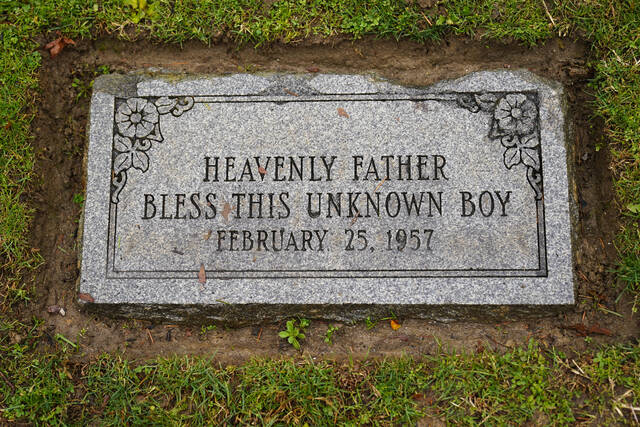Editorial: 'Boy in the Box' shows scope of DNA testing
There is an idea in criminal investigation called Locard’s principle.
It is the idea that no two things come in contact with each other without leaving something behind. You see it in car crashes when the paint from one fender ends up on another vehicle’s bumper. It is found when stray hairs, carpet fibers or lipstick help rebuild the events that took place at a scene.
And then there is DNA — the building block of life that can point to a perpetrator.
That is often how we think of DNA evidence. The backlog of rape test kits waiting to be processed. The occasional instance where a case is solved when a new sample matches an old one. The movies and TV shows that show us DNA as the magical key that puts a bad guy behind bars or lets an innocent man out of prison.
But there is another side to DNA. It doesn’t just identify rapists or murderers. It can also put a name to another kind of nameless — the silent and unknown victims.
On Dec. 8, Philadelphia authorities officially released the name of “the boy in the box.” For 65 years, the fragile, broken body of the little boy found in a cardboard JCPenney bassinet box was unidentified. Who he was, where he came from and why no one stepped forward to claim and mourn him was one of the state’s most famous unsolved crimes.
Now we know that his name was Joseph Augustus Zarelli. He was just 4 years old when beaten to death and discarded, naked and anonymous.
He was identified because of DNA. His mother’s family members used DNA kits to track genealogy, according to the Philadelphia Inquirer. Yes, like the ones you can use to build family trees on a website or app. Where some people find a long-lost cousin or a surprise half-sibling, Zarelli’s family gave investigators the answer to a mystery.
It is a revolutionary tool for law enforcement. It is also not without controversy. These tests and databases raise questions about government accessing information for prosecutorial purposes without need for probable cause or court orders. Do you know what you are agreeing to allow when you send in your sample?
These are questions that should be answered and boundaries that should be drawn as voluntary — even recreational — DNA testing proliferates. Having good answers could mean more people feeling comfortable using the services. That could make it easier to identify remains and give solace to families.
Remove the ads from your TribLIVE reading experience but still support the journalists who create the content with TribLIVE Ad-Free.

